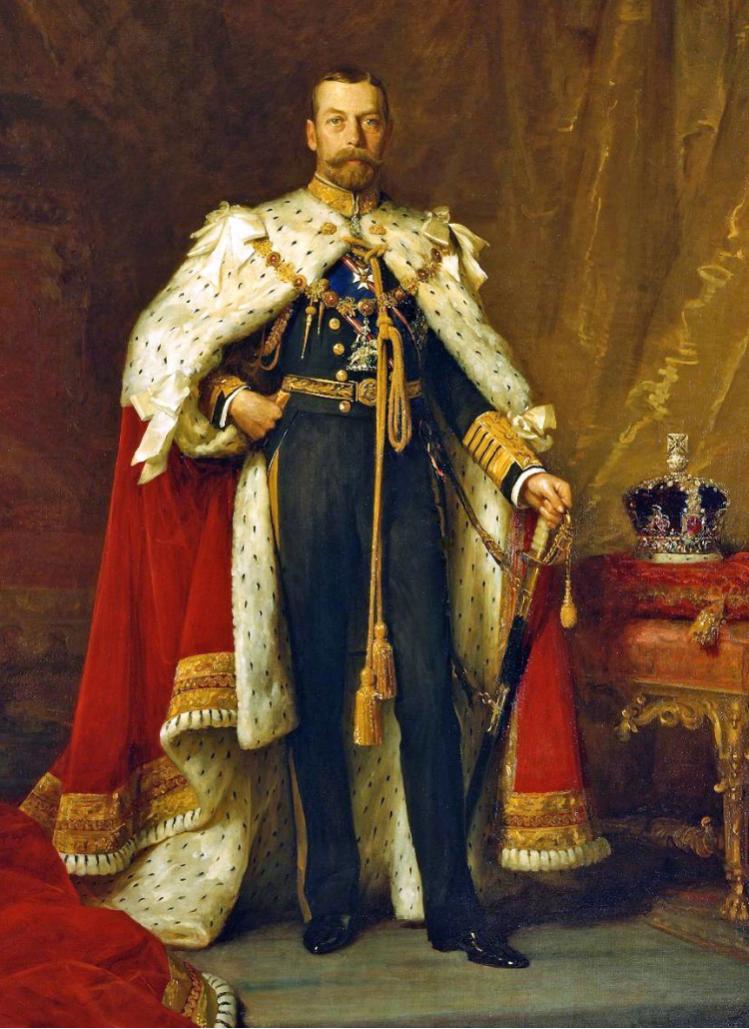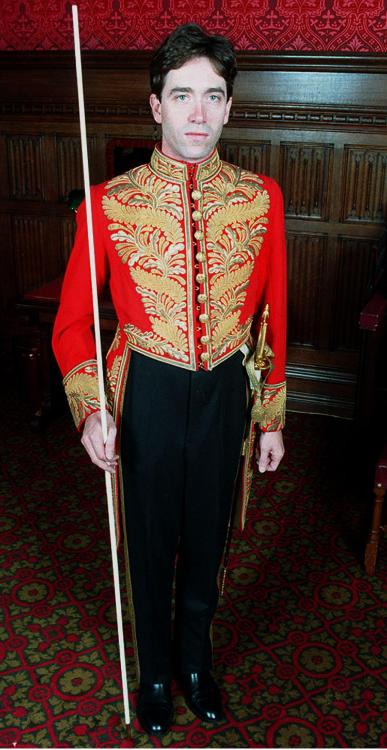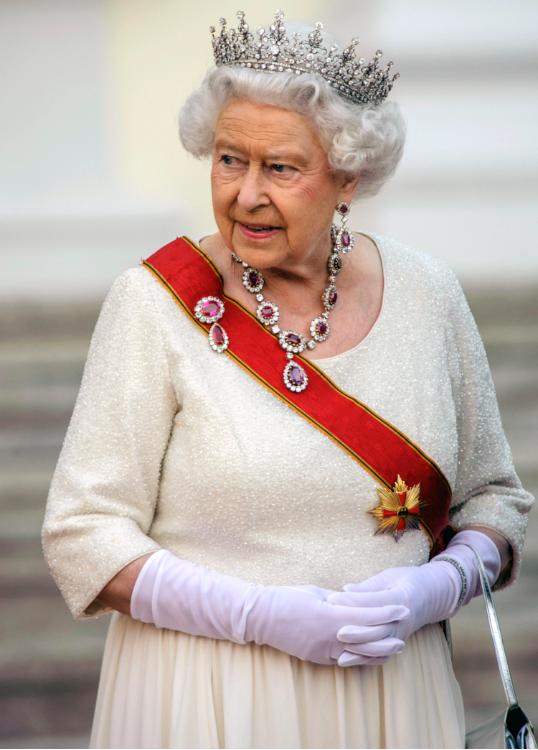Changing of the Lord: How Lord Carrington became the new Lord Great Chamberlain
King Charles III at the Queen's funeral (Thomas Krych / Alamy Stock Photo)
6 min read
The King was not the only person to inherit a new role following the death of Queen Elizabeth II in September. Almost unnoticed was the departure of the sovereign’s representative in Parliament, the Lord Great Chamberlain, Lord Cholmondeley, who lost his job with the demise of the monarch. As Daniel Brittain reports, the new occupant of the hereditary office held by three different families is Lord Carrington
The office of Lord Great Chamberlain has its origins more than 800 years ago. Although hereditary, agreeing which family has actually legally occupied the post down the centuries proves bafflingly complicated. In 1902, the then Marquess of Cholmondeley paid the equivalent of £680,000 in legal fees to settle the question. Since then, his family have held it every alternate reign whilst the Carringtons and Willoughby de Eresbys claim the title for one reign in four. Each new appointment requires up to 25 signatures of approval from the various claimants.
When Lord Carrington took over on 8 September, it was the first time his family had held the position since George V’s reign of 1910 to 1936.
 King George V (Prisma by Dukas Presseagentur GmbH / Alamy Stock Photo)
King George V (Prisma by Dukas Presseagentur GmbH / Alamy Stock Photo)
Although he had known the moment would arrive, and had indeed been attending funeral planning meetings for more than 20 years, his elevation still came as something of a shock.
When the moment came, the 73-year-old financier received no discreet warning from the Palace or Cabinet Office to be on standby. “I was at a board meeting in New York,” he told The House, “when one of my American colleagues looked up from his phone and said ‘Your Queen has died’. I booked straight onto the overnight London flight.” Arriving in London the next morning he was on parade with his fellow Great Officers of State at St James’s Palace for the Accession Council at 10am the following day.
“It was amazing to be face to face with the great and good of the country,” he says. The front row included a clutch of former prime ministers. It was a heady moment, I was taking part in history, but most of all it was a very solemn occasion.”
This job is not a sinecure, I take it very seriously.
Unlike almost everyone else in the room Carrington was not a privy councillor, so did not attend the second stage of the proceedings, the Accession Council in the presence of the new King. Instead, he made his way outside and stood in the crowd in Friary Court shouting “God Save the King” after Garter King of Arms read the public proclamation.
Following the Accession Council Carrington’s next responsibility was to be on duty in Westminster Hall on 14 September for the arrival of the Queen’s coffin for the Lying-in-State, followed by its departure for her funeral service five days later. “Once the procession to the Abbey was underway, I went by a back route to take my place.”
As he walked over to Westminster Abbey, Carrington was wearing the splendid red and gold braid uniform last worn by his Carrington forebear in 1935. “Not only did it fit but it’s still in pretty good condition, except for the collar. I took it back to Henry Poole, the Savile Row tailor, and they made a new one. They were thrilled to see it again.”
Also in the Abbey was his predecessor as Lord Great Chamberlain, Lord Cholmondeley, the 7th Marquess, who had been suddenly deprived of office. Cholmondeley, 62, told The House, “It was very strange to lose the job after 32 years, but nothing like the shock of losing the Queen.”
 Lord Cholmondeley (PA Images / Alamy Stock Photo)
Lord Cholmondeley (PA Images / Alamy Stock Photo)
Before reforms introduced in 1965, the Lord Great Chamberlain had been responsible for the entire Palace of Westminster; since then, the role has been confined to the royal parts of Parliament, including the Royal Gallery and the Robing Room, and plays a part in over-seeing Westminster Hall. He (and it has always been a “he” thus far) is also in charge of arrangements whenever the monarch visits Parliament – formally or informally. In recognition of this, the uniform has a symbolic gold key to the Palace at the hip.
The latest occupant, Lord Carrington, says he felt well-prepared for the role. “It’s a huge advantage that I’m an active peer,” he told The House. “I know my way around and how the place runs.”
Rupert Carrington (son of the sixth Lord (Peter) Carrington who was Margaret Thatcher’s foreign secretary until the Falklands invasion) became an elected hereditary in 2018 and sits on the crossbenches playing an active part in proceedings particularly on matters relating to the environment, agriculture and south east Asia.
It was such an honour to take President Obama on a tour of Parliament
He is also chair of the APPG on China (earning the wrath of Private Eye for what is said to be an uncritical approach to Beijing over Hong Kong – Carrington insists the United Kingdom must be realistic, as China is not going to “go away”).
In his new role, he will be kept busy on matters both domestic and foreign.
Describing the role of Lord Great Chamberlain as one of the best in Parliament, his predecessor, Lord Cholmondeley said he had hugely enjoyed welcoming heads of state to Westminster Hall. “It has been quite extraordinary to be able to talk to Nelson Mandela and Pope Benedict when they addressed both Houses. It was such an honour to take President Obama on a tour of Parliament.” Cholmondeley’s favourite memory was hosting Queen Elizabeth II at the Diamond Jubilee lunch in Westminster Hall.
And there were one or two – sometimes comical – mishaps during his time too. “I had to gracefully chase after the Pope when he headed in the wrong direction.” At State Opening “I only just avoided falling over on one occasion and on another, one of the [late] Queen’s train bearers fainted.” The most embarrassing was when Queen Elizabeth II used the lift. “Someone had called the lift at the same time, and it went two floors higher than intended with the doors opening to reveal some very astonished people. The Duke of Edinburgh thought it was hilarious.”
 Queen Elizabeth II (Sueddeutsche Zeitung Photo / Alamy Stock Photo)
Queen Elizabeth II (Sueddeutsche Zeitung Photo / Alamy Stock Photo)
As he takes over the job, Carrington emphasises trade as a crucial issue and he plans to be on duty to welcome, on behalf of the King, all visiting heads of state when they address both Houses in the Royal Gallery as well as Westminster Hall. “It helps convey the image that the United Kingdom is a power worth dealing with,” he says. “This job is not a sinecure, I take it very seriously.”
As part of his new role, Carrington is looking forward to the coronation and what he believes is one of the perks of office: a length of crimson velvet – a gift of which was made to one of his illustrious predecessors.
Meanwhile, Cholmondeley offers some practical advice for future State Openings: “Make sure everything is running to time and remind the King not to come out of the Robing Room too quickly or he and the Queen will get the trumpet fanfare right in their ears.”
